Bhashyam Balaji
Noise-Type Radars: Probability of Detection vs. Correlation Coefficient and Integration Time
Aug 06, 2022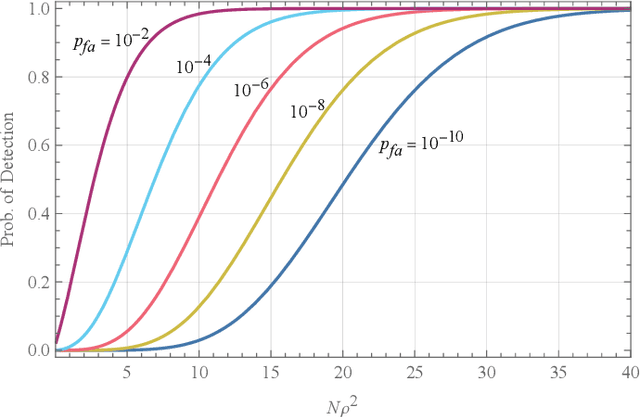
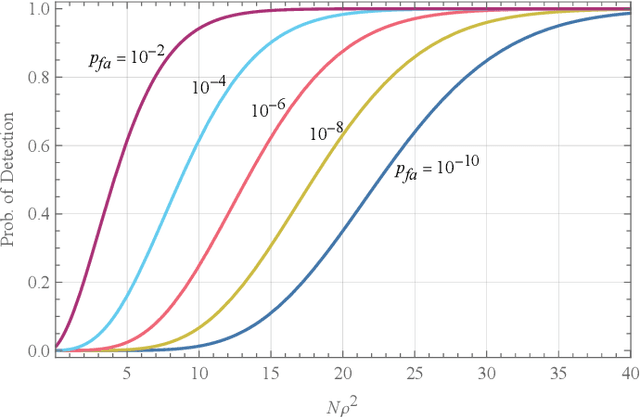
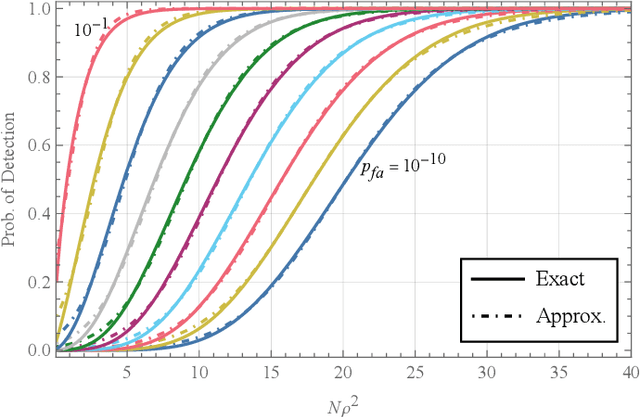
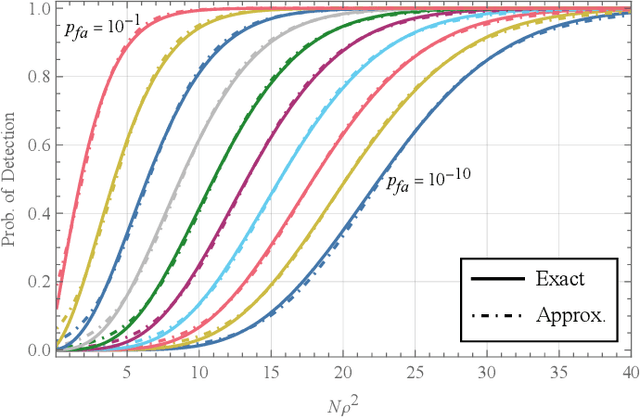
Abstract:Noise radars have the same mathematical description as a type of quantum radar known as quantum two-mode squeezing radar. Although their physical implementations are very different, this mathematical similarity allows us to analyze them collectively. We may consider the two types of radars as forming a single class of radars, called noise-type radars. The target detection performance of noise-type radars depends on two parameters: the number of integrated samples and a correlation coefficient. In this paper, we show that when the number of integrated samples is large and the correlation coefficient is low, the detection performance becomes a function of a single parameter: the number of integrated samples multiplied by the square of the correlation coefficient. We then explore the detection performance of noise-type radars in terms of this emergent parameter; in particular, we determine the probability of detection as a function of this parameter.
Structured Covariance Matrix Estimation for Noise-Type Radars
Apr 16, 2022



Abstract:Standard noise radars, as well as noise-type radars such as quantum two-mode squeezing radar, are characterized by a covariance matrix with a very specific structure. This matrix has four independent parameters: the amplitude of the received signal, the amplitude of the internal signal used for matched filtering, the correlation between the two signals, and the relative phase between them. In this paper, we derive estimators for these four parameters using two techniques. The first is based on minimizing the Frobenius norm between the structured covariance matrix and the sample covariance matrix; the second is maximum likelihood parameter estimation. The two techniques yield the same estimators. We then give probability density functions (PDFs) for all four estimators. Because some of these PDFs are quite complicated, we also provide approximate PDFs. Finally, we apply our results to the problem of target detection and derive expressions for the receiver operating characteristic curves of two different noise radar detectors.
A Family of Neyman-Pearson-Based Detectors for Noise-Type Radars
Apr 16, 2022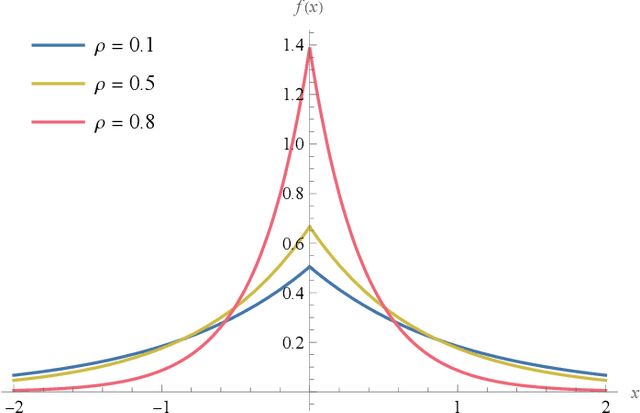
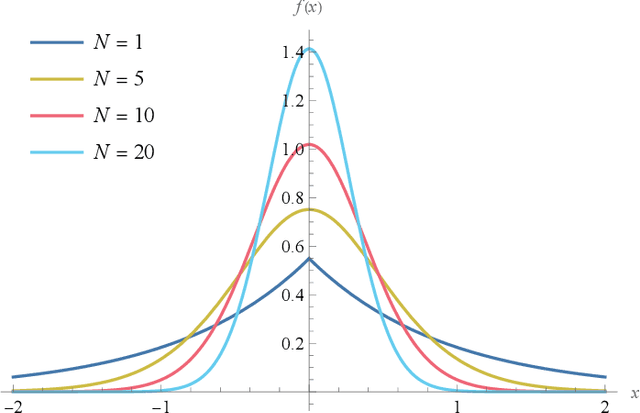
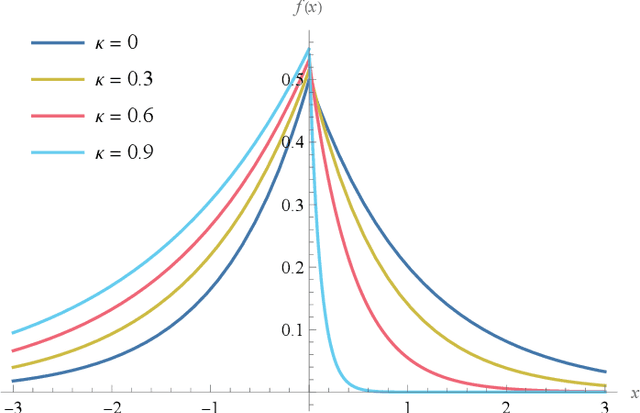
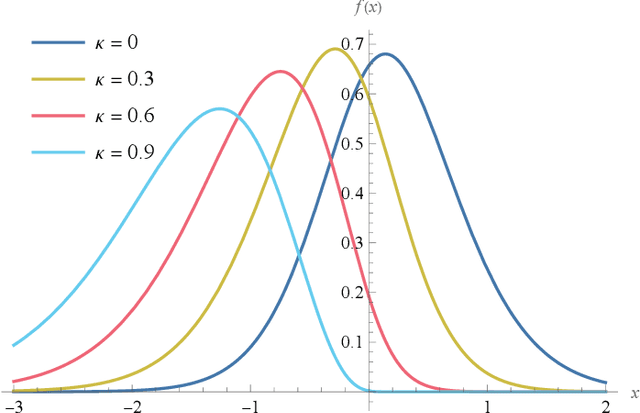
Abstract:We derive a detector that optimizes the target detection performance of any single-input single-output noise radar satisfying the following properties: it transmits Gaussian noise, it retains an internal reference signal for matched filtering, all external noise is additive white Gaussian noise, and all signals are measured using heterodyne receivers. This class of radars, which we call noise-type radars, includes not only many types of standard noise radars, but also a type of quantum radar known as quantum two-mode squeezing radar. The detector, which we derive using the Neyman-Pearson lemma, is not practical because it requires foreknowledge of a target-dependent correlation coefficient that cannot be known beforehand. (It is, however, a natural standard of comparison for other detectors.) This motivates us to study the family of Neyman-Pearson-based detectors that result when the correlation coefficient is treated as a parameter. We derive the probability distribution of the Neyman-Pearson-based detectors when there is a mismatch between the pre-chosen parameter value and the true correlation coefficient. We then use this result to generate receiver operating characteristic curves. Finally, we apply our results to the case where the correlation coefficient is small. It turns out that the resulting detector is not only a good one, but that it has appeared previously in the quantum radar literature.
Object Recognition and Identification Using ESM Data
Mar 22, 2016



Abstract:Recognition and identification of unknown targets is a crucial task in surveillance and security systems. Electronic Support Measures (ESM) are one of the most effective sensors for identification, especially for maritime and air--to--ground applications. In typical surveillance systems multiple ESM sensors are usually deployed along with kinematic sensors like radar. Different ESM sensors may produce different types of reports ready to be sent to the fusion center. The focus of this paper is to develop a new architecture for target recognition and identification when non--homogeneous ESM and possibly kinematic reports are received at the fusion center. The new fusion architecture is evaluated using simulations to show the benefit of utilizing different ESM reports such as attributes and signal level ESM data.
Intent Inference and Syntactic Tracking with GMTI Measurements
Apr 22, 2011



Abstract:In conventional target tracking systems, human operators use the estimated target tracks to make higher level inference of the target behaviour/intent. This paper develops syntactic filtering algorithms that assist human operators by extracting spatial patterns from target tracks to identify suspicious/anomalous spatial trajectories. The targets' spatial trajectories are modeled by a stochastic context free grammar (SCFG) and a switched mode state space model. Bayesian filtering algorithms for stochastic context free grammars are presented for extracting the syntactic structure and illustrated for a ground moving target indicator (GMTI) radar example. The performance of the algorithms is tested with the experimental data collected using DRDC Ottawa's X-band Wideband Experimental Airborne Radar (XWEAR).
 Add to Chrome
Add to Chrome Add to Firefox
Add to Firefox Add to Edge
Add to Edge